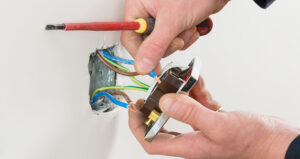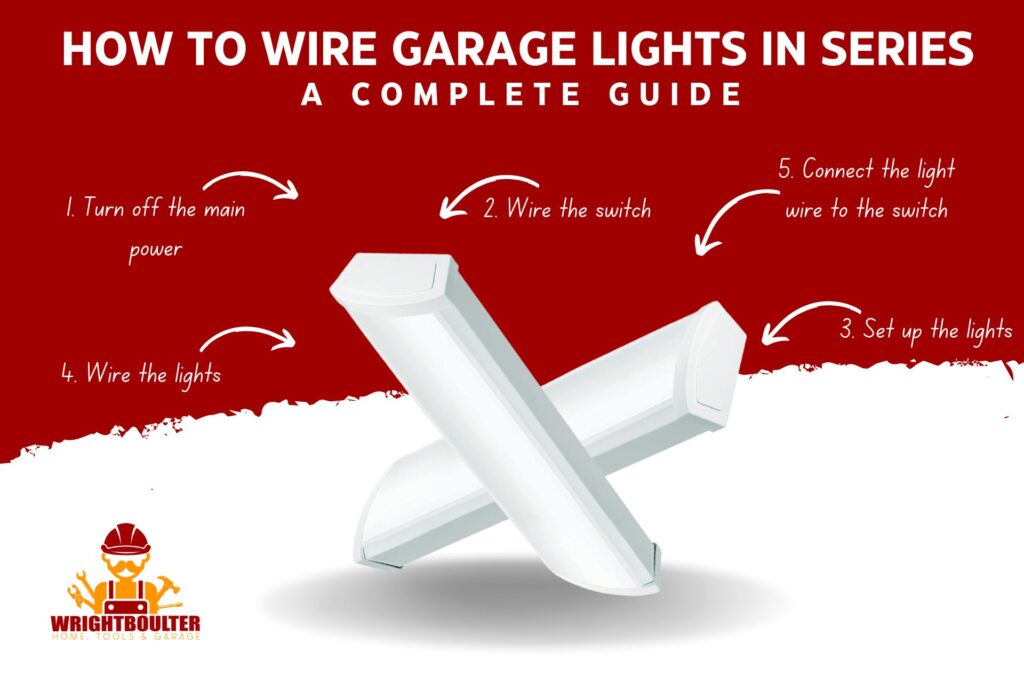Introduction
Many homeowners want to try series circuit for their garages. Wiring the garage lights in series is easy to do and saves money and time.
So, want to know how to wire garage lights in series?
To wire your garage lights in series, first turn off the main power, connect the hot wire from the power source to the first light’s hot terminal and its neutral terminal to the power source’s neutral wire. Then, connect the first light’s hot wire to the second light’s hot terminal and its neutral wire to the second light’s neutral terminal. Repeat for each additional light fixture.
In this article, you will be able to know the process of wiring garage lights in series in detail along with its advantages and disadvantages. So let’s start the discussion.
Step-by-step Process of Wiring Garage Lights in Series
Before starting the main process, you should know some important safety precautions for this.
 Source: Finolex
Source: Finolex
Safety Precautions
- Before starting any wiring in your garage, disconnect the power to your garage.
- Use the appropriate wire size for your garage.
- Use the approved electrical boxes and fittings.
- Always use insulated rubber gloves.
- Do not repair any electrical circuits with wet hands.
Tools Needed
- Coloured tape
- Voltage tester
- Continuity tester
- Wire cutters
- Cable and wire stripes
(Note: Remember that all of the bulbs in a series of multiple light fixtures must be the same wattage)
You can install the light switch on the wall close to the garage door and the cable can be run between each light fixture. You can choose tools between Neiko vs Tekton, according to your desire.
 Source: Smart Electricians
Source: Smart Electricians
Step 1: Turn off the main power
Before starting any work in the garage you’ll have to turn off the power from the breaker box. It is located in the garage even if your garage is connected to your home.
If you have a detached garage structure, you’ll find a separate breaker box for the garage.
Step 2: Wire the switch
Run a length of electrical cable from the power source to the first light fixture in the series. Strip off the outer sheath of the cable using a wire stripper, and separate the black (hot) and white (neutral) wires.
Connect the black wire from the power source to the hot terminal of the first light fixture. Use a wire connector to make a secure and tight connection.
Repeat the same process with the white wire from the power source, connecting it to the neutral terminal of the first light fixture.
Step 3: Set up the lights
Now, you can set up the lights in your desired positions. But before installing the lights, you should ensure that there are some spare cables. When you will connect one light to another these cables will make this work easier.
These cables should be 8 to 10 inches in length. Once you prepare the cables, you can now install the lights in your desired position. It is important to ensure that the lights are secured in place.
 Source: Dlsweb
Source: Dlsweb
Step 4: Wire the lights
Run another length of electrical cable from the first light fixture to the second light fixture in the series. Strip off the outer sheath of the cable and separate the black and white wires.
Connect the black wire from the first light fixture to the hot terminal of the second light fixture using a wire connector. Repeat the same process with the white wire, connecting it to the neutral terminal of the second light fixture.
Repeat step 5 and 6 for each additional light fixture in the series.
 Source: Hunzalighting
Source: Hunzalighting
Step 5: Connect the light wire to the switch
This is the last step of the process. Once all the light fixtures are wired in series, connect the last light fixture’s neutral wire to the power source’s neutral wire, and the last light fixture’s hot wire to the power source’s hot wire.
Turn on the power supply to the garage lights by switching on the circuit breaker. Test the lights to ensure they are working correctly.
Pros And Cons of Wiring Garage Lights In Series
When you are planning to wire lights in series in your garage then these pros and cons should be in your mind.
Disadvantages:
- The entire circuit will be broken if there is a failure or removal of any single lamp or if there is a break in the wire. Because in series, the circuit has only one path for current to flow through. If the path is broken, the current can not reach any of the other lamps in the circuit. As a result, all the other lamps in the series will also stop working.
- As more lights are added in a series circuit, the voltage across each lamp is reduced. As a result, the brightness of each lamp is also reduced.
As there are disadvantages in the series, it has also some advantages
Advantages:
- In series wiring, you will need shorter length wire.
- You will use less electricity in series circuit.
- All the light fixtures are controlled by one switch which is convenient.
- In series wiring, all the components are connected to a single path which makes it easier to detect faults in the circuit.
FAQs
Which Lights Will Be Brighter In Series Or Parallel?
Parallel lights will be brighter than the series. Because each light in parallel circuits has the full voltage of the battery. But in series, each light shares the voltage of the battery. In that case, if one light has less wattage then it may bright less than others.
What Are The Disadvantages Of The Parallel Circuit?
The major disadvantage in a parallel circuit is that the voltage of the power remains constant at that of a single power source. Another disadvantage is the division of energy sources across the entire circuit.
Can I Connect The LED Without A Resistor?
No, you can not connect the LED without a resistor. You have to use a limiting resistor to protect the LED from the full voltage. If you clip the LED without a resistor, the LED will be overdriven and it can be burned out easily.
Conclusion
Thank you so much for being patient till the end. I tried to show you the whole process of wiring the garage lights in series and provided the safety tips.
You will be able now to do this by yourself by following the process above. Be aware of these safety precautions before starting the process.
That’s all for today. Good luck!



